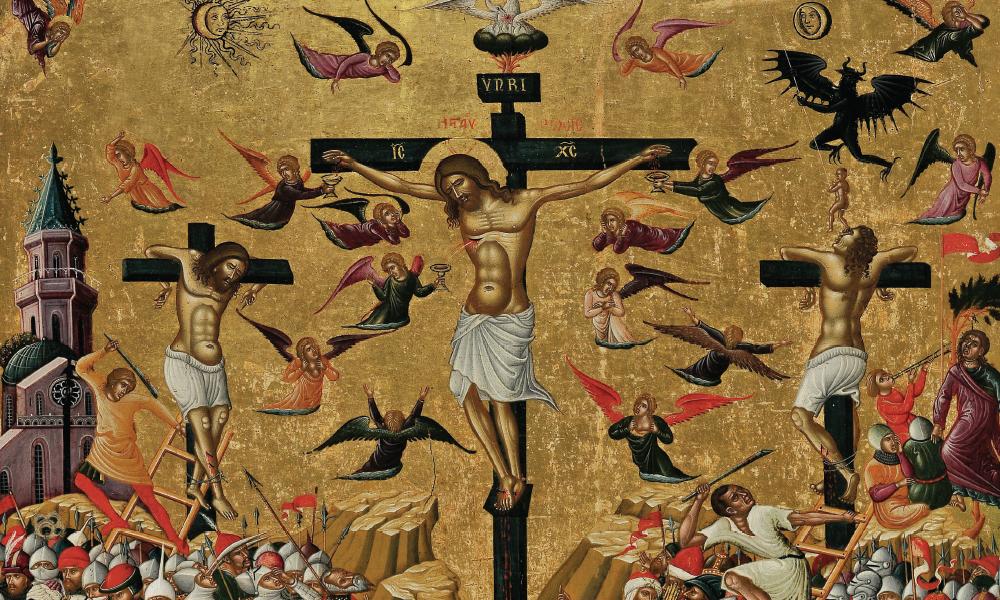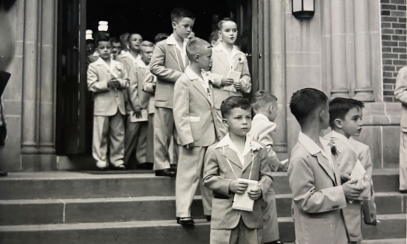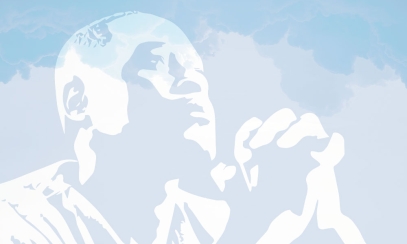
A Personal Experience of the Holy Eucharist
The other day I had a special experience at Mass. At the prayer before communion, the priest held up the chalice and said as usual, “Lord, I am not worthy that you should enter under my roof, but only say the Word and my soul shall be healed.”
The other day I had a special experience at Mass. At the prayer before communion, the priest held up the chalice and said as usual, “Lord, I am not worthy that you should enter under my roof, but only say the Word and my soul shall be healed.”
At that moment I noticed that I was precisely aligned with the highly held chalice and the crucifix behind the altar. There in the pew, I was looking through the chalice to the bottom of the cross that looked like it was virtually in the chalice.
Perhaps at other times and at other Mass I have been sitting at an angle and never noticed it. But this alignment was perfect. The connection between the bread and wine and the body and blood of Christ on the cross was unmistakable.
I was drawn to move my eyes up from the chalice to see Jesus’ hanging on the cross, and then back down from his body to the chalice, back and forth.
The Impact
More than ever before it brought home to me that this is Jesus on the cross whom we are celebrating in the non-bloody sacrifice of the Mass. Suddenly, it was more real. Christ on the cross and the bread and wine at Mass were in perfect alignment, perfectly one in the moment, beautifully together in visual harmony.
The young, recently ordained priest had no awareness of my personal experience, but I paused on the way out of Mass to tell him. He was genuinely moved to think he had so powerfully gotten through to someone. We looked into each other’s moistening eyes, and he said something like “That’s the way it’s supposed to be.”
The brief conversation was a bit of a blur, but I think I said “Thank you for holding the chalice up so high in front of the cross, which made the experience possible.” I hope all priests do this at every Mass and repeatedly make the point of this sacramental connection to the congregation.
The Painting
I told my son about this experience, and he said he once saw a painting that portrayed Christ on the cross with his blood flowing from the wound in his side directly into a chalice. I searched for this work of art and found one by the painter Andreas Pavias, a Greek artist living around the 1500s on what is now the island of Crete. In his painting the chalice is held by an angel, and two more hold chalices under each of his hands while the blood from the nails in his feet pours down on sinners and saints alike.
Modern-day Scenario
Imagine for a moment that the event in Pavias’ painting happened today. Let’s paint a word picture of how it could unfold, as Jesus continues to impress upon us about the Eucharist — from 2,000 years ago at the Last Supper to today:
We are at Mass one day, and the celebrant ducks quickly behind the altar during communion to get additional hosts for his ciborium — the large, covered cup or bowl that holds the hosts. He momentarily sets the ciborium down next to the tabernacle, and reaching inside he retrieves some previously consecrated hosts and proceeds to transfer them to his ciborium. In doing so, he shockingly notices what looks like blood in his previously empty vessel.
While he is looking into the ciborium, another few droplets land inside and ripple. They are coming from above. The priest looks up in astonishment to see blood dripping down from the pierced side of Christ on the cross above the tabernacle.
Realizing what he is witnessing, he drops to his knees, raises his arms to the crucified Jesus and trembles and weeps as the drops keep falling. The congregation watches in awe, some cry out, “My Lord and my God!” They fall to their knees, some to their faces, crying, praying, thanking God — all are in amazement.
Eventually, the drops stop falling. The priest can hardly go on with Mass, and the only sounds are muffled cries and prayers. But he gingerly rises, picks up the ciborium with the blood of Jesus still present and walks slowly back to the altar.
The bewildered celebrant sets the ciborium down and raises his eyes to heaven in quiet thanks. He then lowers his head for one more reverent look into the ciborium, only to receive another shock — the blood has turned into wine.
In all this spiritual turmoil, the good priest manages to remember that the wine in his chalice on the altar had already been consecrated; it too was the blood of Christ. All he had to do was to pour the new wine from his ciborium into the chalice and drink the intermingled blood of Christ with a joy and wonderment he had never before experienced. With no doubt in his mind, he consumes the body and blood of Jesus, literally shed for us on the cross.
The priest would never be the same again.
And neither should we when we witness this exact miracle at every Mass.
Thomas Dorsel, Ph.D., is professor emeritus of psychology and a graduate of the University of Notre Dame. He lives on Hilton Head Island with his wife Sue and is a parishioner at St. Francis by the Sea Church. Visit him at dorsel.com.



